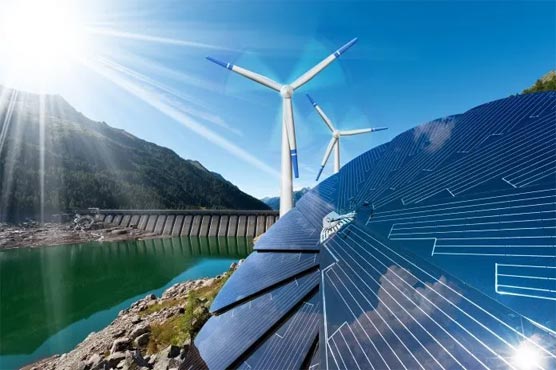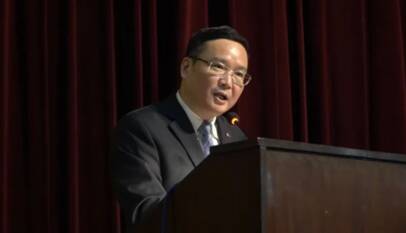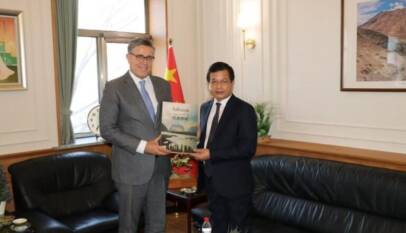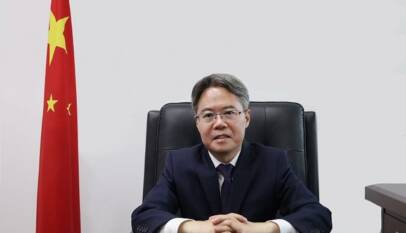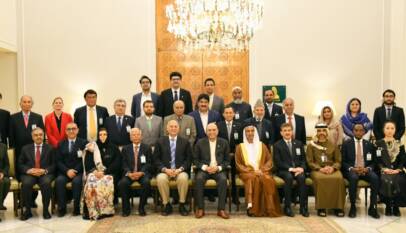Government to increase share of renewable power projects under CPEC
The incumbent government has prioritised power projects, which also include strategic projects under CPEC. Moreover, the government has decided that the share of renewable energy power projects will increase by 20% in 2025 and 30% by year 2030. These projects will be powered by wind, solar, and hybrid technologies from the year 2023-24 onwards on least cost principle. Sources have also revealed that the government will execute those power generation projects under the government-to-government arrangement that are listed under federal government’s international (bilateral or multilateral) commitments, if project financing agreements have been signed.
ISLAMABAD:
The government has prioritised power projects, which also include strategic projects under the China-Pakistan Economic Corridor (CPEC) to execute the Indicative Generation Capacity Expansion Plan (IGCEP).
Sources told The Express Tribune that the government will execute those power generation projects under the government-to-government arrangement that are listed under federal government’s international (bilateral or multilateral) commitments, if project financing agreements have been signed.
In the second category are those committed projects that have obtained Letter of Support (LOS) as of December 2020 for private sector projects. In the third category federal government public sector projects for which the PC-I has been approved and funding secured as of March 2021 have been included.
However, Jamshoro Unit-2 and Chashma-5 Nuclear plant project shall be modelled as candidate projects to be evaluated under least cost principle. The Power Division will present a case to the government regarding the list of projects categorised as ‘strategic’ within one month.
The differential from the least cost principle in each case and the proposed mechanism for funding the same will also be presented.
According to officials, the IGCEP 2047 would be utilised to determine the prioritised list of projects on the principle of least cost of energy. These projects on the ideal least cost scenario fall in the following broad categories; projects that have achieved letter of support and are required to fulfil COD deadlines, projects that have specific timelines under G2G/multilateral arrangements.
If the projects under government-to-government agreements do not have specifically stipulated timelines for completion, the plan would optimise their completion date based on the cost of energy from such projects.
Renewable targets for new projects will be governed on the basis of least cost principle as per ARE Policy 2019. Due to capacity factor advantage, renewable energy project additions shall be through utilising hybrid renewable energy resources.
The Power Division gained the government’s approval for the summary titled ‘Approval of Assumption Inputs for the Indicative Generation Capacity Expansion Plan (IGCEP)’.
The Power Division will solicit advice from the Law and Justice Division on whether the letter of intent (LoI) issued to category III renewable energy projects are binding for the federal government to allow these projects to proceed forward or otherwise on the technology and/or power quantum indicated in the respective Lols.
The current IGCEP iteration for renewable energy projects will be done under existing targets as per ARE Policy 2019, subject to least cost principle.
The government has decided that renewable energy on-grid power projects in balance target block share as stipulated in the ARE Policy 2019 ie, 20% by year 2025 and 30% by year 2030 (including net-metering),candidate block will be considered on respective wind/solar/hybrid technologies from the year 2023-24 onwards on least cost principle.
The government will have to amend RE Policy 2019 keeping these amendments in view.
Chinese envoy Zhao Shiren urges students to uphold integrity and strengthen China-Pakistan ties
LAHORE:The Consul Generals from several countries and other distinguished guests attended …



